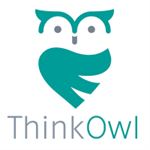What is pain points meaning? Pain points refer to specific problems customers experience in the purchasing process or when using a product or service, impacting satisfaction.
Pain points meaning, they are a common term in the business world, but what exactly do they mean? Pain points refer to specific problems or challenges that customers face and experience as they interact with a product or service. These pain points can range from minor annoyances to major issues that can cause customers to abandon a product or service altogether.

Understanding the pain points meaning is crucial for businesses looking to improve their customer experience and increase customer satisfaction. By identifying and addressing pain points, businesses can build trust with their customers and improve their overall reputation. However, identifying pain points meaning can be challenging, as they may not always be obvious or easy to pinpoint.
In this article, we will explore the pain points meaning in detail, including how to identify them and strategies for addressing them. We will also examine the impacts of pain points on businesses and provide real-world examples of how businesses have successfully addressed pain points. By the end of this article, readers will have a comprehensive understanding of pain points and how to effectively address them to improve their customer experience.
Key Takeaways
- Pain points meaning refer to specific problems or challenges that customers face when interacting with a product or service.
- Identifying and addressing pain points meaning is crucial for building trust with customers and improving overall customer satisfaction.
- Strategies for addressing pain points meaning include gathering customer feedback, prioritizing pain points, and implementing solutions to address them.
Understanding Pain Points Meaning
Defining Pain Points Meaning
Pain point meaning, it is a problem or issue that causes discomfort, frustration, or inconvenience to an individual or a group of people. Pain points can arise from a variety of sources, including product or service deficiencies, financial constraints, process inefficiencies, or lack of support.
Identifying pain points meaning is crucial for businesses looking to improve customer satisfaction and retention. By understanding the specific pain points of their customers, businesses can tailor their products and services to meet their needs and expectations.
Types of Pain Points
There are several types of pain points that individuals or businesses may experience. These include:
- Productivity Pain Points: These are pain points that arise from inefficiencies in the workplace, such as difficulty completing tasks or time-consuming processes.
- Financial Pain Points: These are pain points that arise from financial constraints, such as high costs or limited budget.
- Process Pain Points: These are pain points that arise from inefficiencies in business processes, such as complex workflows or outdated technology.
- Support Pain Points: These are pain points that arise from a lack of support or assistance, such as poor customer service or inadequate technical support.
Understanding the different types of pain points meanings is important for businesses looking to address specific customer needs and improve overall customer satisfaction.
To learn more about pain points meanings and how to identify them, check out this article by Forbes Agency Council.
Identifying Customer Pain Points
Identifying customer pain points is a crucial step in creating a successful business. By understanding the needs and wants of your customers, you can create a product or service that meets their needs and solves their problems. In this section, we will discuss various methods that can be used to identify customer pain points.
Research Methods
The first step in identifying customer pain points is to conduct research. This can be done through surveys, interviews, and focus groups. Surveys are an excellent way to gather large amounts of data quickly and efficiently. Interviews and focus groups allow for more in-depth conversations and can provide valuable insights into customer needs and pain points.
Customer Feedback and Reviews
Another way to identify customer pain points is to look at customer feedback and reviews. This can be done by monitoring review sites and social media platforms. Customers often leave feedback about their experiences with products and services, and this feedback can provide valuable insights into pain points and areas for improvement.
Analyzing Competitor Landscape
Analyzing the competitor landscape is another way to identify customer pain points. By looking at what your competitors are doing, you can identify areas where they are falling short and create a product or service that meets those needs. This can be done by analyzing competitor websites, social media platforms, and customer reviews.
Overall, identifying customer pain points is a crucial step in creating a successful business. By using research methods, customer feedback and reviews, and analyzing the competitor landscape, you can create a product or service that meets the needs of your customers. For more information on identifying customer pain points, check out this article from Inc.com.
Impacts of Pain Points

When customers face pain points, it can have significant impacts on various aspects of a business. Here are some of the areas that can be affected:
On Customer Experience
Pain points can negatively impact the customer experience, leading to frustration and dissatisfaction. For example, if a customer has difficulty navigating a website or finding the information they need, they may abandon their purchase altogether. This can result in lost revenue and a decrease in customer satisfaction. To avoid this, businesses should identify and address pain points as quickly as possible.
On Sales and Marketing
Pain points can also impact sales and marketing efforts. If a sales team is not equipped to handle customer concerns or objections, they may lose out on potential sales. Similarly, marketing campaigns that do not address pain points may not resonate with customers and fail to generate leads. By understanding and addressing pain points, businesses can create more effective sales and marketing strategies.
On Product and Service Development
Pain points can also provide valuable insights into areas for improvement in product and service development. By identifying pain points, businesses can better understand what customers need and want, and make changes accordingly. This can lead to increased customer satisfaction and loyalty.
To learn more about pain points meaning and their impact on businesses, check out this article from Forbes.
Overall, it is essential for businesses to address pain points in order to provide a positive customer experience, improve sales and marketing efforts, and develop better products and services.
Strategies for Addressing Pain Points

When it comes to addressing pain points, there are several strategies that businesses can use to improve customer satisfaction and loyalty. These strategies include improving customer service, enhancing user experience, and optimizing sales processes.
Improving Customer Service
One of the most effective ways to address pain points is by improving customer service. This can be achieved by providing timely and accurate information to customers, addressing their concerns and complaints promptly, and ensuring that their needs are met. Companies can also provide self-service options, such as online chatbots or knowledge bases, to help customers find the information they need quickly and easily.
To improve customer service, companies should prioritize training their customer support staff to handle customer inquiries and complaints with empathy and professionalism. They can also use customer feedback to identify pain points and make necessary changes to their service offerings.
Enhancing User Experience
Another strategy for addressing pain points is by enhancing user experience (UX). This involves improving the usability and accessibility of products and services to ensure that they meet the needs of customers.
To enhance UX, companies should conduct user research to identify pain points and areas for improvement. They can then use this information to prioritize and recommend changes to their products and services. This may involve redesigning user interfaces, simplifying processes, or adding new features to meet customer needs.
Optimizing Sales Processes
Finally, companies can address pain points by optimizing their sales processes. This involves streamlining sales efforts to make it easier for customers to make purchases and access support.
To optimize sales processes, companies should prioritize improving the usability of their online sales platforms, such as e-commerce websites or mobile apps. They can also provide personalized recommendations and support to customers based on their needs and preferences.
One external resource that can be helpful for businesses looking to address pain points is the Customer Experience Professionals Association (CXPA). This organization provides resources and support for businesses looking to improve their customer experience strategies and practices.
Tools and Resources
Technology Solutions
There are a variety of technology solutions available to help alleviate pain points in various industries. Marketing automation tools, for example, can help streamline and automate marketing processes, reducing the need for manual labor and increasing efficiency. Some popular marketing automation tools include HubSpot, Marketo, and Pardot.
In addition to marketing automation tools, there are also software solutions available for various industries. These solutions can range from project management software to accounting software. For example, QuickBooks is a popular accounting software used by many small businesses.
Expert Consultation
Sometimes, the best way to address pain points is to seek the help of an expert. Agencies and freelancers can provide valuable insight and expertise in a variety of industries. For example, a digital marketing agency can help a business develop a comprehensive marketing strategy and implement it effectively.
When seeking expert consultation, it is important to do research and choose a reputable agency or freelancer. Reading reviews and checking references can help ensure that the chosen expert has the necessary skills and experience to address the specific pain points.
One external resource that can be helpful in finding reputable agencies and freelancers is Clutch.co. This website provides reviews and ratings for various service providers, making it easier to find the right expert for the job.
Best Practices for Businesses

When it comes to addressing customer pain points meaning that businesses of all sizes and industries can benefit from implementing best practices. By identifying and addressing the pain points of their customers, businesses can build trust and strengthen relationships with their clients. Here are some best practices for businesses to consider:
For Small Businesses
Small businesses often have limited resources, which can make it difficult to address all of their customers’ pain points. However, by focusing on the most pressing pain points meaning that small businesses can make a big impact on their customers’ experiences. One effective strategy is to prioritize pain points based on their impact on the customer relationship. For example, if a pain point is causing customers to lose trust in the business, it should be addressed immediately.
Another best practice for small businesses is to be transparent about pricing. Customers appreciate businesses that are upfront about their pricing, as it helps them make informed decisions about their purchases. By being transparent about pricing, small businesses can build trust with their customers and avoid misunderstandings that can lead to pain points.
For B2B and Sales Reps
In the B2B space, pain points meaning can be more complex and varied than in the B2C space. Sales reps and businesses that sell to other businesses should take the time to understand their customers’ pain points and develop solutions that address them. This can involve conducting research, having conversations with customers, and analyzing data.
One best practice for B2B sales reps is to focus on building relationships with their customers. By taking the time to understand their customers’ pain points and needs, sales reps can become trusted partners who are invested in their customers’ success. This can help to mitigate pain points meaning you can build long-term relationships.
For Service Providers
Service providers, such as consultants and agencies, often work closely with their clients to address pain points meaning. One best practice for service providers is to be proactive in identifying pain points before they become major issues. This can involve conducting regular check-ins with clients, monitoring feedback, and analyzing data.
Another best practice for service providers is to be transparent about their processes. Clients appreciate service providers who are upfront about their methods and can clearly explain how they are addressing pain points. By being transparent, service providers can build trust with their clients and avoid misunderstandings that can lead to pain points.
In conclusion, businesses that take the time to identify and address their customers’ pain points can build trust, strengthen relationships, and improve customer experiences. By implementing best practices, businesses can mitigate pain points meaning to create positive outcomes for their customers and themselves. For more information on pain points meaning and best practices for addressing them, check out this resource.
Case Studies and Real-World Examples

Success Stories
One of the best ways to understand the pain points meaning is to look at real-life examples. In the case of Intuit, the company was able to identify key pain points meaning for small business owners: managing their finances. Intuit created QuickBooks, a software that simplifies accounting and bookkeeping for small businesses. This solution has been a great success and has helped many small business owners save time and money.
Another example is Dropbox. Before Dropbox, people had to rely on physical storage devices such as flash drives or external hard drives to store their files. This was not only inconvenient but also risky as these devices could easily be lost or damaged. Dropbox solved this pain point by providing a cloud-based storage solution that allows users to access their files from anywhere and on any device.
Lessons Learned
Peer-to-peer review sites like Yelp and TripAdvisor have also played a significant role in identifying pain points for businesses. By allowing customers to leave reviews and ratings, businesses can get valuable feedback on what they are doing well and what they need to improve on.
One lesson learned from these review sites is that customer service is crucial. Negative reviews often stem from poor customer service experiences, which can be major pain point meaning for customers. By prioritizing customer service and addressing any issues promptly, businesses can improve their overall customer satisfaction.
In conclusion, understanding pain points meaning is crucial for businesses looking to improve their products or services. By looking at case studies and real-world examples, businesses can identify pain points meanings and find solutions that address them. Peer-to-peer review sites can also provide valuable feedback on what businesses are doing well and what they need to improve on.
Frequently Asked Questions

What are common examples of customer pain points in business?
Customer pain points in business can vary depending on the industry, but some common examples include long wait times, poor customer service, difficulty navigating a website or app, and product defects. These issues can lead to frustration and dissatisfaction, which can ultimately result in lost sales and negative reviews.
How do pain points in marketing affect consumer behavior?
Pain points in marketing refer to the specific problems or challenges that a target audience may be experiencing. By addressing these pain points in marketing campaigns, businesses can demonstrate that they understand their customers’ needs and are offering solutions to their problems. This can lead to increased brand loyalty and higher conversion rates.
Can you describe the typical pain points encountered in sales processes?
Common pain points in sales processes include difficulty reaching decision-makers, objections to pricing or terms, and lengthy sales cycles. These issues can slow down the sales process and make it more difficult to close deals.
What are the four main categories of pain points businesses often identify?
Businesses often identify four main categories of pain points: financial, process-related, product-related, and support-related. Financial pain points meaning those related to cost or budget constraints, while process-related pain points meaning those related to inefficiencies or bottlenecks in operations. Product-related pain points meaning those refering to issues with the actual product or service being offered, and support-related pain points meaning those refering to problems with customer service or technical support.
How do companies effectively identify and address process-related pain points?
Companies can effectively identify and address process-related pain points by conducting process audits, analyzing data to identify bottlenecks, and soliciting feedback from employees and customers. Once pain points have been identified, companies can then implement process improvements or invest in new technology to streamline operations.
What are some synonyms for ‘pain points’ used within a business context?
Some synonyms for ‘pain points’ used within a business context include challenges, obstacles, problems, and frustrations. By understanding and addressing these pain points, businesses can improve customer satisfaction and drive growth.
For more information on pain points in business, check out this article from Forbes.














